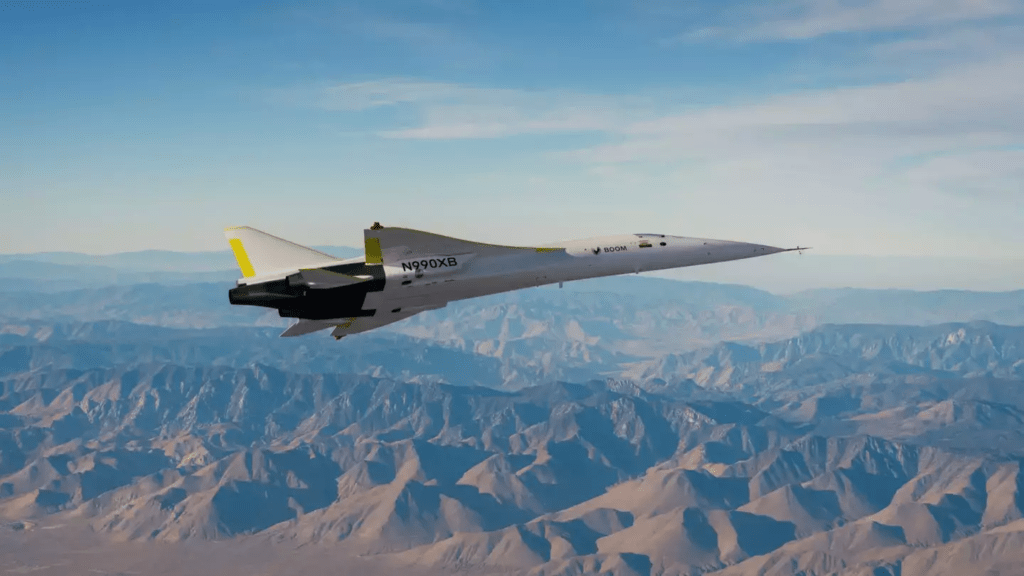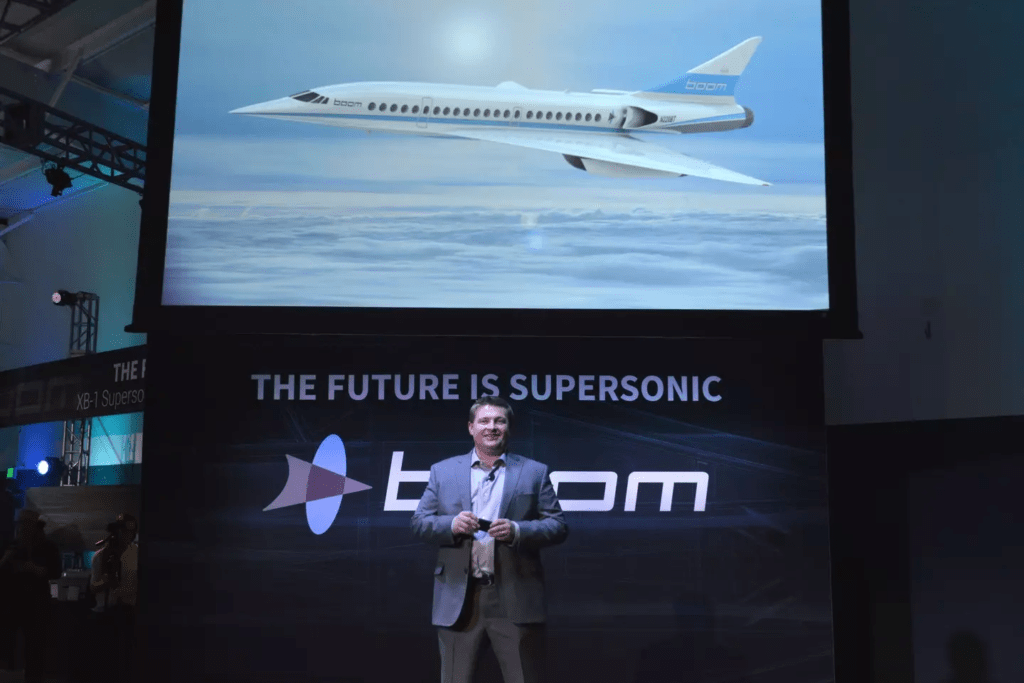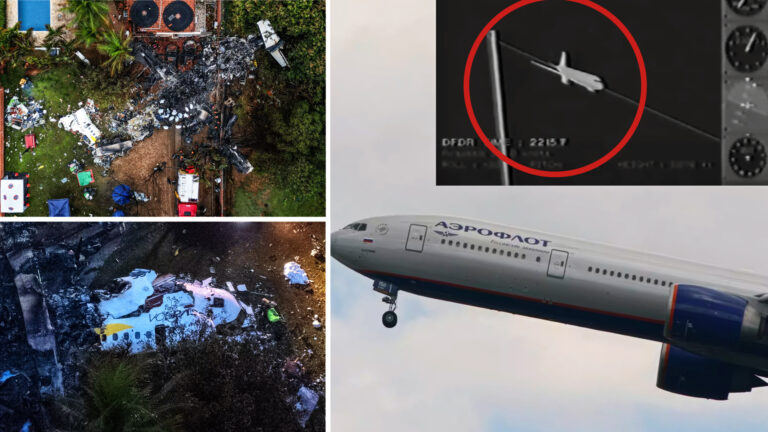The ‘Son of Concorde’ Jet Set to Break Supersonic Barriers: London to New York in Just 3.5 Hours

Introduction
Supersonic travel is no longer just a dream of the past—it’s on the brink of becoming our reality once again. Enter the XB-1, a futuristic jet that has captured the imagination of aviation enthusiasts and casual travellers alike. Known fondly as the “Son of Concorde,” this ground-breaking aircraft is set to achieve what many thought impossible: slashing travel times across the Atlantic Ocean to a mere three and a half hours.
Designed and developed by Boom Technology, the XB-1 represents a new era of high-speed, sustainable travel. Unlike the iconic Concorde, which retired two decades ago, this next-generation jet promises not only speed but also eco-conscious innovation. With a series of successful test flights under its wings, the XB-1 is edging closer to its crowning achievement: reaching supersonic speeds.
In this article, we’ll delve into the latest developments, the cutting-edge technology behind this marvel, its implications for the future of travel, and how social media is amplifying the excitement.
The Latest on XB-1: Nearing Supersonic Speeds
The XB-1 prototype has been steadily making progress toward achieving its ambitious goals. Earlier this month, the jet completed a 44-minute test flight, reaching an altitude of 29,481 feet and a speed of Mach 0.95. To put this into perspective, Mach 1—the threshold for supersonic travel—is equivalent to approximately 767 mph. While the jet has not yet officially broken the sound barrier, it’s remarkably close.

The next test flight, scheduled for 28 January 2025, is expected to be a pivotal moment in aviation history. During this flight, the XB-1 aims to hit Mach 1, marking its transition from transonic to supersonic speeds. This historic milestone will be broadcast live, allowing aviation enthusiasts and curious minds worldwide to witness the moment humanity once again embraces supersonic commercial flight. You can catch the event on Boom Supersonics’ Livestream at 2:45 PM UK time.
Breaking Down the Achievements So Far
During its most recent test flight, the XB-1 achieved 383 KEAS (knots equivalent airspeed). This milestone was part of a careful expansion of its dynamic pressure, a critical factor for ensuring safety and precision during supersonic flight. As Boom Technology explained:
“During flight testing, we carefully expand one parameter at a time—either Mach number or dynamic pressure—in order to ensure safe and precise performance. The relationship between these two numbers changes with altitude—the faster and lower you are, the higher the dynamic pressure, and vice versa.”
This methodical approach underscores the complexity of developing a supersonic aircraft and the meticulous planning required to ensure its success. With chief test pilot Tristan ‘Geppetto’ Brandenburg in the cockpit, all eyes are on the upcoming flight, which promises to be a game-changer.
What Makes the XB-1 Special?
The XB-1 isn’t just another jet; it’s a technological masterpiece designed to redefine air travel. Drawing inspiration from the legendary Concorde, the XB-1 aims to overcome the challenges that grounded its predecessor, such as high operating costs and environmental concerns.
Key Features of the XB-1
- Unprecedented Speed: Capable of reaching speeds above Mach 1, the XB-1 promises to cut transatlantic travel times in half. Imagine leaving London in the morning and arriving in New York before lunch!
- Sustainability at Its Core: Unlike the Concorde, which faced criticism for its environmental impact, the XB-1 incorporates advanced materials and fuel-efficient engines to minimize its carbon footprint.
- Aerodynamic Excellence: The aircraft’s sleek design reduces drag, allowing it to achieve maximum speed with optimal efficiency.
- Cutting-Edge Safety Features: Each component of the XB-1 undergoes rigorous testing to ensure it can withstand the extreme conditions of supersonic flight.
Testing Zones
To prepare for its historic supersonic flight, the XB-1 is being tested in two specialized airspaces:
- Bell X-1 Supersonic Corridor
- Black Mountain Supersonic Corridor
These testing zones in California provide ideal conditions for high-speed flight experiments while ensuring safety for nearby communities.
The combination of speed, sustainability, and cutting-edge technology makes the XB-1 a truly remarkable feat of engineering, setting it apart from any other aircraft in development today.
Social Media Buzz: A Global Phenomenon
The XB-1’s journey has sparked a tidal wave of excitement across social media platforms. Aviation enthusiasts, tech lovers, and everyday travellers are all captivated by the promise of supersonic travel. Hashtags like #BoomSupersonic and #SonOfConcorde have been trending, as users share their thoughts, reactions, and hopes for this ground-breaking aircraft.
Twitter: Conversations Heating Up
On Twitter, aviation fans are eagerly counting down to the next test flight. Tweets like this are gaining traction:
“Can’t believe we’re about to see the XB-1 hit Mach 1! Supersonic travel is officially back! 🚀 #BoomSupersonic”
Another user commented:
“This is the Concorde 2.0 we’ve been waiting for. Faster, greener, better. Let’s go! #SonOfConcorde”
Instagram: Stunning Visuals Go Viral
Instagram users are flooding the platform with CGI renders and real-life images of the XB-1. One post under #XB1 reads:
“Imagine flying from London to NYC in just 3.5 hours. The XB-1 isn’t just a plane; it’s the future of travel!”
TikTok: Creative Takes on Supersonic Travel
TikTok creators have joined the hype, posting videos featuring the XB-1 alongside dramatic music and effects. One viral TikTok video captioned “Supersonic travel is coming back—and it’s cooler than ever!” has already garnered over 1.5 million views.
Social media is amplifying the buzz, bringing global attention to this historic moment in aviation.
Why Supersonic Travel Matters
The return of supersonic travel is more than a technological achievement—it’s a transformative development with far-reaching implications for business, leisure, and global connectivity.
- Time Efficiency: Cutting flight times in half would make day trips across continents a reality, revolutionizing business travel and opening up new opportunities for global collaboration.
- Economic Impact: The XB-1 could boost tourism and trade by making international travel faster and more accessible.
- Inspiring Innovation: The success of the XB-1 could pave the way for new advancements in aerospace technology, from propulsion systems to sustainable materials.
- Sustainability Goals: By prioritizing eco-friendly design, Boom Technology is addressing the environmental challenges that previously hindered supersonic travel.

The XB-1 isn’t just a jet; it’s a catalyst for progress, setting the stage for a more connected and sustainable world.
Looking Ahead: The Future of Supersonic Travel
The success of the XB-1 is a stepping stone toward the development of Overture, Boom Technology’s flagship commercial supersonic jet. Designed to carry 65-80 passengers at speeds of Mach 1.7, Overture aims to make supersonic travel a mainstream option for both business and leisure travellers. This next-generation jet will be capable of flying from New York to London in just 3.5 hours, making global business trips and vacations even more convenient. With its first commercial flight projected for the 2030s, Overture has the potential to transform air travel on a global scale. But for now, all eyes are on the XB-1 as it prepares to break the sound barrier and usher in a new era of aviation. It’s not just about speed; it’s about a future where traveling around the world in a matter of hours could become the new normal.
Conclusion
The “Son of Concorde” is more than just a nickname—it’s a symbol of what’s possible when innovation meets ambition. As the XB-1 inches closer to supersonic speeds, it’s clear that the future of air travel is fast, sustainable, and incredibly exciting. We’re on the brink of a new age where crossing the globe in mere hours is no longer a dream but an impending reality. The technological advances driving this project could have far-reaching benefits, not only for commercial aviation but for the aerospace industry as a whole. Mark your calendars for 28 January 2025, and don’t miss the livestream of this historic moment: Watch the Supersonic Test Flight. The sky is no longer the limit—it’s just the beginning, and the future of flight is here.
Don’t miss the livestream of this historic event: Watch the XB-1’s Supersonic Test Flight
Featured Image Credit: Boom Technology






